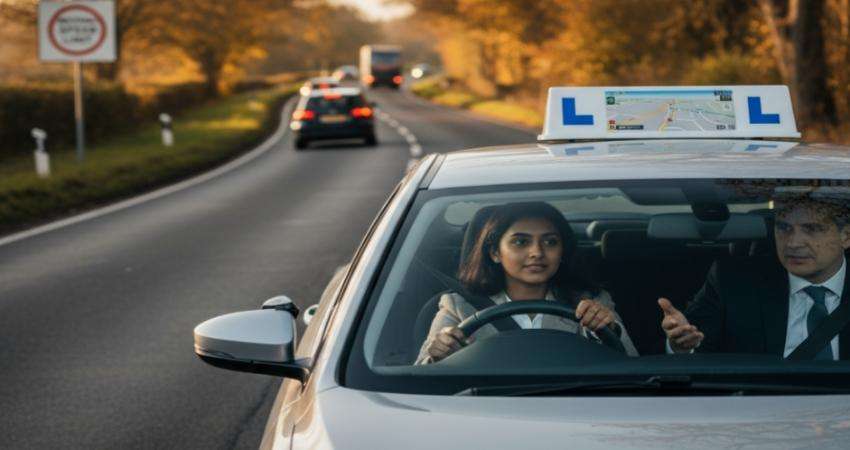New Era for the Practical Driving Test: Focus Shifts to Risk Management-The UK's Driver and Vehicle Standards Agency (DVSA) is ushering in a significant change to the practical driving test, with a new format set to be permanently rolled out across all test centres from Monday, November 24, 2025. The adjustments, which follow a successful trial period, are designed to make the test more reflective of real-world driving and to better prepare new motorists for the most hazardous environments, particularly high-speed and rural roads.
The shift is a direct response to alarming road safety statistics, which show that nearly half of all serious or fatal crashes involving young drivers occur on rural roads. By adjusting the test to spend more time in these environments, the DVSA aims to embed crucial risk-management skills in learners before they pass and drive independently.
Key Changes to the Practical Driving Test Structure-Learner drivers taking their test from next week will notice three main operational changes to the assessment itself, though the overall duration of the test remains the same:
Fewer Compulsory Stops: The number of mandatory, controlled stops—where the examiner asks the candidate to pull over safely at the side of the road—will be reduced from four to three. This small but crucial reduction frees up time for the test route to flow more naturally and cover a greater variety of demanding road types.
Reduced Emergency Stop Frequency: The requirement for the emergency stop exercise will be significantly lessened, moving from being carried out in one out of every three tests to now being required in only one out of every seven tests. This change reflects modern vehicle safety standards and allows the examiner to better concentrate on continuous driving assessment.
Extended Independent Driving Section: The independent driving segment will now be more flexible, giving examiners the ability to extend it to run for the full duration of the test if needed. During this time, the candidate will be asked to follow a sat-nav, traffic signs, or a combination of both, providing a sustained demonstration of their ability to manage a journey without constant instruction. This prolonged focus on self-guided driving aims to build a more confident and risk-aware new driver.
Tackling the Backlog: Essential Booking Rule Updates-Alongside the structural changes to the test, the government is introducing strict new booking rules to combat the substantial test backlog of over 600,000 learners and to crack down on third-party touts and booking bots. These measures, which are being rolled out alongside the test format changes, are vital for ensuring fair access to test slots for genuinely ready learners.
Learner-Only Booking: Moving forward, only the learner driver will be permitted to book and manage their practical driving test, preventing driving instructors from bulk-booking or using bots to secure slots.
Limit on Changes: Learners will be restricted to a maximum of two changes to their test booking in total. This includes changes to the date, time, or a swap with another candidate. After two changes, the booking must be cancelled and a new one made.
Geographical Restriction on Moves: Any allowed change in test centre location will be strictly limited to a small geographical area close to the original booking. This is designed to prevent slots in quieter areas from being booked up and then immediately moved to high-demand city centres.
Advice for Learner Drivers: How to Prepare for the New Test
The message for all learner drivers is clear: preparation must now focus less on rote-learning a test route and more on becoming a genuinely safe, adaptable, and independent driver.
Embrace High-Speed and Rural Driving: You must gain significant, quality experience on faster roads, including dual carriageways and challenging rural routes, under the supervision of your Approved Driving Instructor (ADI). Focus on judging speed, anticipating hazards, and safely navigating bends and junctions in these higher-risk areas.
Master Independent Driving: Work with your instructor to simulate the extended independent driving section. Practice following sat-nav directions confidently for long periods and be ready to adapt quickly if you miss a turn or the directions are unclear. Demonstrate strong observational skills and risk management throughout.
Book Smart, Not Soon: With the new, stricter booking rules, the days of booking a test "just in case" are over. Only book your test when both you and your ADI agree that you are consistently driving at a pass standard. Passing a mock test with your instructor should be a non-negotiable step before confirming a date, as failing and rebooking will now be more challenging and time-consuming.
Review the Highway Code: While the structure is changing, the fundamental rules of the road remain paramount. A strong knowledge of the Highway Code is essential, especially regarding priority, overtaking, and road signs, all of which will be tested under more realistic, varied conditions.
The DVSA's commitment is to produce safer, more capable new drivers. By understanding these permanent changes and focusing on real-world driving competency, next week's test candidates and those following can give themselves the best chance of passing and becoming a safe motorist for life, Daily Dazzling Dawn realised.

.jpg)


.jpg)


.svg)
